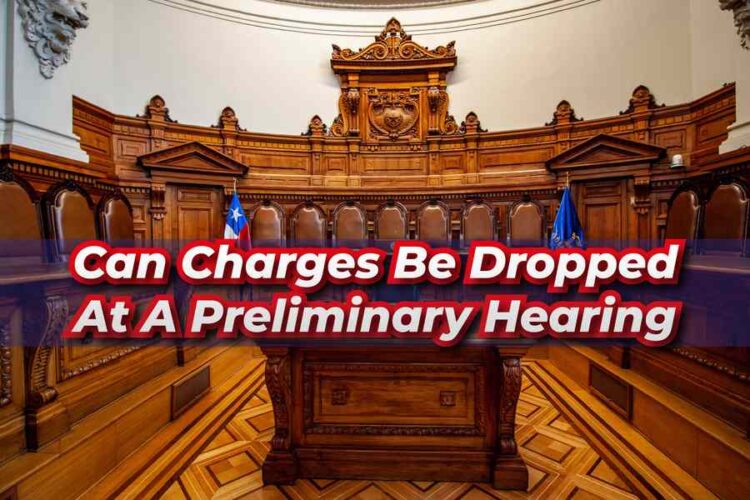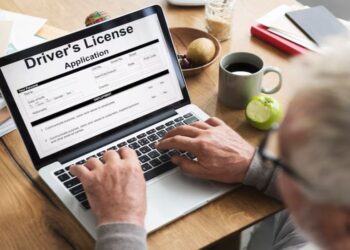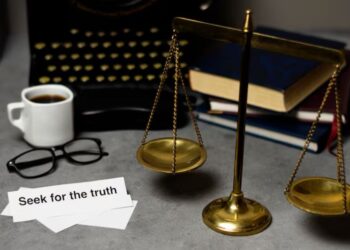If you have been arrested and charged with a crime, the next logical step is a preliminary hearing. This is the point at which the prosecution must present evidence to establish reasonable cause that you committed the crime(s) for which you have been arrested. If you are facing misdemeanor charges and can afford private counsel, your lawyer will almost certainly advise you not to accept an agreement without first exploring your options with a preliminary hearing. However, even if you cannot afford counsel and instead must rely on public defenders, it may still be in your best interests to opt for a preliminary hearing. In most cases, this means that the initial arraignment will be postponed until after your preliminary hearing. While they don’t represent as much of an advantage as they would if you were facing felony charges, there are multiple advantages to requesting a preliminary hearing if you must proceed with a public defender. However, it’s important to remember that this isn’t standard in all cases; it will depend on your particular set of circumstances.
Can Charges Be Dropped At A Preliminary Hearing?
The short answer is no. A preliminary hearing is a motion hearing where the judge decides if there is enough evidence for the case to proceed to trial. If the judge finds that there is not enough evidence, they will dismiss the case.
When Is A Preliminary Hearing Required?
1. Misdemeanor Charges
If you are facing misdemeanor charges, a preliminary hearing is required for all but the most minor of offenses. If a judge determines that the evidence presented by the prosecution is not sufficient to warrant a trial, the charges will be dismissed.
2. Felony Charges
If you are facing felony charges, a preliminary hearing is required unless your case is filed as an information and not an indictment. An information is filed by the prosecution after they have sufficient evidence that they believe will be able to prove their case at trial. If the judge determines that there is not enough evidence, the charges will be dismissed.
3. Jury Trial
If you are charged with a felony, a preliminary hearing is required unless the judge determines that there is not enough evidence to warrant a trial by jury. In this case, the judge will simply dismiss the charges.
4. Misdemeanor or Felony Trial Without a Preliminary Hearing
If you are charged with a felony and the judge determines that there is enough evidence to warrant a trial by jury, the charges will not be dismissed. However, if the prosecutor believes that there is not sufficient evidence to warrant a jury trial, they will ask for another preliminary hearing. This hearing will be held within twenty-one days of the initial hearing. If the judge finds that there is not enough evidence, the charges will be dismissed and you may proceed with your trial by jury.
5. A Complicated Case
If a preliminary hearing is required, you will be given an opportunity to present your case to a judge. You may also have the opportunity to ask questions of the prosecution and have them ask questions of you. This is called a “cross-examination.”
What Happens During A Preliminary Hearing?
1. The Judge Will Hear the Case
If the judge decides that there is enough evidence to warrant a trial, they will call the case. The prosecutor and defense attorney each have one opportunity to present their case to the judge.
2. The Prosecutor Will Present Evidence in Support of the Charges
The prosecution will present evidence in support of the charges so that they may show that they have enough evidence to warrant a trial.
3. The Defense Attorney Will Present Evidence in Support of the Defendant’s Case
The defense attorney will present evidence in support of his or her client’s case so that he or she may show that there is not enough evidence for a trial. However, this does not mean that you are completely innocent; it simply means that there is not enough evidence to warrant a trial by jury.
4. The Judge Will Decide Whether There Is Enough Evidence to Warrant a Trial by Jury
If the judge finds that there is not enough evidence, they will dismiss the charges. However, if they find that there is enough evidence to warrant a trial by jury, the charges will not be dismissed.
5. The Judge Will Decide Whether There Is Enough Evidence to Warrant a Jury Trial
If the judge finds that there is not enough evidence, they will dismiss the charges and you may proceed with your trial by jury. If the judge finds that there is enough evidence to warrant a trial by jury, the charges will be dismissed.
Pros Of Having A Preliminary Hearing
1. The Judge Will Decide Whether There Is Enough Evidence to Warrant a Trial by Jury
If the judge finds that there is not enough evidence, they will dismiss the charges and you may proceed with your trial by jury. If the judge finds that there is enough evidence to warrant a trial by jury, the charges will be dismissed. The judge will decide whether or not there is enough evidence to go forward with a trial.
2. You Have an Opportunity to Present Your Case
You have an opportunity to present your case during this hearing. This means that you are able to present all of your arguments in support of your innocence and argue against any possible defenses that you may have.
3. The Judge Will Decide Whether There Is Enough Evidence To Warrant A Trial By Jury
If the judge finds that there is not enough evidence, they will dismiss the charges and you may proceed with your trial by jury. If the judge finds that there is enough evidence to warrant a trial by jury, the charges will be dismissed. The judge will decide whether or not there is enough evidence to go forward with a trial.
4. You Can Prove Your Innocence, Which Can Help Your Case
In order for you to prove your innocence, you must show that there is not enough evidence to warrant a trial by jury. This means that you must show how your actions are justified and how they do not warrant a trial.
5. You Can Present Your Argument During the Preliminary Hearing
During this hearing you have an opportunity to present all of your arguments in support of your innocence and argue against any possible defenses that you may have.
Disadvantages Of A Preliminary Hearing
1. You Can’t Present Your Case During this Hearing
In order for you to prove your innocence, you must show that there is not enough evidence to warrant a trial by jury. This means that you must show how your actions are justified and how they do not warrant a trial.
2. You Can’t Present Your Argument During the Preliminary Hearing
During this hearing you have an opportunity to present all of your arguments in support of your innocence and argue against any possible defenses that you may have.
3. You Cannot Appeal the Judge’s Decision
If the judge decides that there is enough evidence to warrant a trial by jury, you cannot appeal this decision. If you are found guilty of the charges brought against you, then you will be required to serve your sentence according to the laws of that state.
Conclusion
A preliminary hearing offers several advantages. It’s a way to get the charges against you dropped more quickly and avoid a trial entirely. However, it also prolongs the case, which could be disruptive to your work and personal life. If you are charged with a misdemeanor, it is almost always in your best interests to proceed with a preliminary hearing. This is because it’s your best chance of the charges against you being dropped. If you are charged with a felony, it’s more complicated. You may be able to proceed directly to a preliminary hearing if the crime you are charged with is a wobbler.










